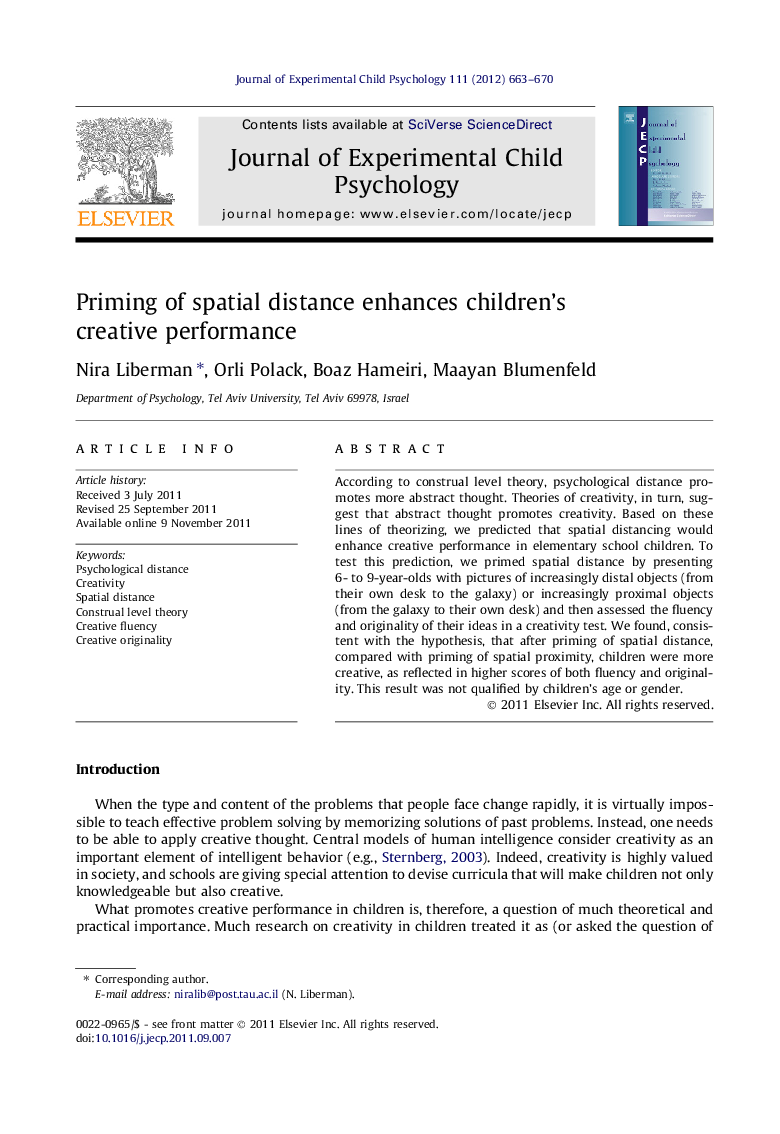| Article ID | Journal | Published Year | Pages | File Type |
|---|---|---|---|---|
| 918270 | Journal of Experimental Child Psychology | 2012 | 8 Pages |
According to construal level theory, psychological distance promotes more abstract thought. Theories of creativity, in turn, suggest that abstract thought promotes creativity. Based on these lines of theorizing, we predicted that spatial distancing would enhance creative performance in elementary school children. To test this prediction, we primed spatial distance by presenting 6- to 9-year-olds with pictures of increasingly distal objects (from their own desk to the galaxy) or increasingly proximal objects (from the galaxy to their own desk) and then assessed the fluency and originality of their ideas in a creativity test. We found, consistent with the hypothesis, that after priming of spatial distance, compared with priming of spatial proximity, children were more creative, as reflected in higher scores of both fluency and originality. This result was not qualified by children’s age or gender.
► Priming of spatial distance enhanced creativity in 6–9 year old children. ► Creativity in children, like in adults, may be enhanced by a brief manipulation of priming. ► Children, like adults, seem to adopt a more abstract mode of thought when they process psychologically distal stimuli.
